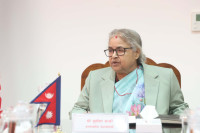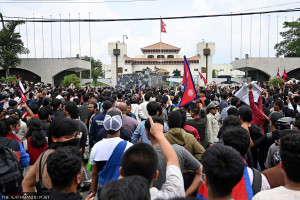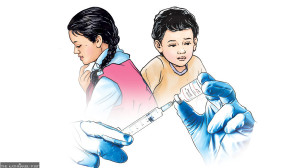Opinion
Uneven representation
Minorities have been relegated to the sidelines in the federal and state legislatures
Amar Kant Jha
The Seven Party Alliance had promised to implement a reservation system for historically marginalised groups like women, Dalits, ethnic groups, Madhesis and people of backward regions in order to lure them to support the 2006 People’s Movement. It would be worthwhile to examine how far this pledge was fulfilled during the 2017 federal, provincial and local elections. The election rules and regulations were promulgated in haste, and various inclusive clusters were determined haphazardly in order to reduce the population of the agitating Tarai-Madhesis. Here, five clusters—Khas-Arya, hill ethnic groups, hill Dalit, Madhesi Dalit and Tarai-Madhesi—have been used as points of reference while appraising the election results.
There were 275 seats up for grabs in the elections to the House of Representatives. Based on the proportion of population, Khas-Arya (who make up 31.2 percent of the country’s population) should have secured 86 seats, but they bagged 119 seats. In contrast, hill ethnic groups (26.8 percent of the population), hill Dalit (8.5 percent), Madhesi Dalit (4.6 percent) and Tarai-Madhesi (28.7 percent) should have got 76, 23, 12 and 78 seats, but they actually won 64, 17, one and 74 seats respectively.
Similarly, in the election to the 59-member National Assembly, Khas-Arya should have gained 18 seats but they won 32 seats. Hill ethnic groups, Madhesi Dalit and Tarai-Madhesi got 16, three and 17 seats respectively. Hill Dalit won five seats, exactly proportionate to their population.
In the Provincial Assembly elections too, Khas-Arya gained a disproportionate number of seats. Thus, Khas-Arya have been represented in the federal Parliament with a big difference of 47 seats while hill ethnic groups, hill Dalit, Madhesi Dalit and Tarai-Madhesi have been under-represented with a deficit of 16, six, 12 and 13 seats respectively. Similarly, in the seven Provincial Assemblies, Khas-Arya have altogether won with a huge difference of 64 seats.
As per the Constitution, 33 percent of the members of the federal Parliament must be women; but even here, Khas-Arya women have gained 41 seats instead of 33, affecting adversely women’s representation of other inclusive clusters. In this way, Tarai-Madhesis, hill ethnic groups and hill Dalits have not got due their share in the federal and provincial legislatures. The status of Madhesi Dalit is the most deplorable of all.
Address grievances
As regards representation in the National Assembly, Tarai-Madhesis are constitutionally constrained to remain under-represented. In the election of the members of the National Assembly, the chairperson and vice-chairperson of the village council and the mayor and deputy mayor of the municipal council are also voters. Since the hilly region with 49.8 percent of the national population consists of 487 village/municipal councils and Tarai-Madhes with 50.2 percent of the population has only 266 village/municipal councils, the representation of Tarai-Madhesis in Provinces 1, 5 and 7 can never be equal to their population.
In no federal country in the world are representatives of local bodies also voters in the election to an institution. Not only that, the uneven representation will still prevail because of the faulty constitutional provision of electing eight members from each of the seven provinces irrespective of their population.
Owing to the overwhelming representation of Khas-Arya, they will have perpetual hegemony over the entire power structure. In fact, the mistake lies in the way the provincial boundaries have been drawn. Geographical homogeneity was violated by attaching the eastern and western districts of Tarai-Madhes, inhabited by a large number of Khas-Arya, to the adjoining hills so as to reduce Madhesis, Tharus and hill ethnic groups to minorities in their own homeland thus hindering the rightful representation of excluded groups.
Thus, the constitution framing parties have backtracked on the promises made during the People’s Movement regarding the due representation of marginalised groups. If the Nepali people from all sections do not feel constitutionally assured of their equal right to representation, it must be admitted that democracy has not been established in the true sense of the term even after the 2006 People’s Movement. Therefore, the current government, which commands a two-thirds majority, must make a magnanimous gesture toward the agitating Madhesis and other excluded groups by addressing their longstanding and genuine grievances through appropriate constitutional amendments, thus paving the way for national harmony by ensuring equal rights to all Nepalis in all respects.
Jha is a retired Tribhuvan University professor




 5.39°C Kathmandu
5.39°C Kathmandu










%20(1).jpg&w=300&height=200)

